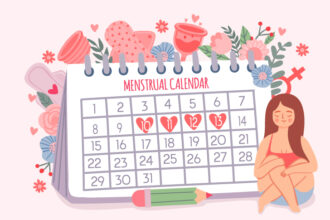“], “filter”: { “nextExceptions”: “img, blockquote, div”, “nextContainsExceptions”: “img, blockquote, a.btn, a.o-button”} }”>
“Going in one more round when you don’t think you can, that’s what makes all the difference in your life.”
We don’t end up quoting legendary celluloid pugilist Rocky Balboa too often at Oxygen, but this one seemed kinda apropos, considering the topic.
That’s because while he may have been making a point about boxing (and beyond), he could have just as easily been talking about weight training. That is, squeezing out just one more repetition when you’re gassed at the end of a set and don’t think it’s possible can make all the difference in your fitness results over the long run.
Sure, someone could punch a hole through that logic by pointing out the obvious flaw: How can you get more reps when you’ve reached utter failure and can’t possibly move the weight without compromising your form and risking injury?
That’s where drop sets come in to deliver just the knockout you need.
Beyond Failure
First up, a quick primer is in order. “A drop set means that after you reach momentary muscle failure with a weight during a set, you immediately lower the amount of weight you’re using by anywhere from 20 to 50 percent and then continue repping until you reach failure again,” explains Dan Roberts, a top U.K. strength and conditioning coach and founder of the Dan Roberts Group.
You can stop after one drop, or you can go ahead and drop the weight one to two more times depending on just how far you want to push yourself. The key to performing a drop set to perfection, however, is to make sure your first set is taken to true failure. “When doing drop sets, the first set is always a little bit of an experiment,” Roberts says. “When you get to the second round, you’ll want to change the weight, if necessary, so that you’re not doing more than 20 reps in total when counting all the reps within the set, including all drops. I try to aim for 15 reps max — in other words, my 6RM (the amount of weight you can handle for six reps before failure) for the initial reps and then a drop of 30 percent that allows me to get about eight to nine more reps to failure.”
If, however, you can get more than 15 in total, you’ve either gone too light on your initial weight or you cut too much on the drop. With a little practice (and some good record keeping in your training notebook), you’ll get a feel for proper weight selection.
“Drop sets require you to train hard and stay focused,” Roberts adds. “They are really tough on the muscles and on the body’s central nervous system. Because of that, I’ll usually only use them once within a bodypart workout and only about 15 percent of the time in any given month. If you try to do them more often than that, you can burn out fast — it’s that intense. But if used right, it can really spice up your workouts and help you break through any plateaus or ruts you’ve found yourself in at the gym.”
6 Super Drop Set Combos
In addition to using a drop set for the same exercise, another drop technique is to pair two complementary exercises into a superset — the first movement being a bit more challenging, followed by a slightly easier variation in which you incorporate one to two drop sets. This allows you to extend a set further than if you simply just did the first, more difficult exercise to failure and stopped.
Here, Roberts lays out six finisher combos that he thinks best incorporate this technique. Doing them at the tail end of a workout will ensure you’ve thoroughly worked the muscle group, leaving no fiber unturned in your quest for maximum results.
Back: Wide-Grip Pull-Up Followed by Wide-Grip Lat Pulldown
“Wide-grip pull-ups are the best back exercise in my view, so if you can do them, you should,” Roberts says. “After hitting failure on those, you can either switch to a close-grip pull-up, which reduces lat involvement and incorporates more biceps, making them a little easier, or you can do a lat pulldown if the machine is close by — when doing superset-style drop sets, I try to make sure the turnaround between moves is less than five seconds. If you lean back about 45 degrees when doing the pulldown, it’ll hit the teres major and upper lats in a similar way as the pull-up.”
Chest: Flat-Bench Barbell Press Followed by Seated Machine Chest Press
“Chest machines are great for drop sets — they are relatively safe and they don’t require as much from your stabilizing muscles,” Roberts points out. “When doing a drop set after benching, I find my athletes get better results by making the drop less complex so they can just focus on the key prime working muscles. You could also just drop weight from each side of the barbell and continue benching, but I really don’t think you can get the same level of intensity in your pecs, triceps and anterior delts as you do when you can just fully focus on pushing on the machine.”
Quadriceps: Front Squat Followed by Bodyweight Sissy Squat
“When maxing out on a squat, it’s hard to tackle another exercise right after, but I have had my clients try doing other finishing moves,” Roberts says. “I’m a big fan of a set of 15 plyometric squat jumps, and we’ve also done leg extensions and the leg-press machine, too. But in my experience, sissy squats are the best. Just lock your feet in place and go for full range of motion — you may hit 15 reps or so, which is slightly more than I’d suggest for a typical drop set, but going bodyweight only keeps it very simple and straightforward.”
Hamstrings: Romanian Deadlift Followed by Lying Hamstring Curl
“After working up to your heaviest weights on an eight- to 12-rep Romanian deadlift, your whole body will be knackered, so pairing it with a lying or seated hamstring curl will provide more than enough stimulation,” Roberts says. “Other free-weight-based hamstring exercises are too difficult in a superset like this, while with a machine, you can more easily control the weight. It’s also easier to do a double drop since you just need to change the pin in the stack.”
Biceps: Close-Grip Supinated Pull-Up Followed by Banded Standing EZ-Bar Curl
“As I mentioned with the back combination, close-grip pull-ups — especially with your palms turned toward your body — really engage the biceps,” Roberts says. “I’ve suggested doing the standing curl with bands around the ends of each side of the bar instead of weights as you stand on the middle of the band to provide the resistance, but you can also just load the bar with weight and skip the band if you prefer. You can also make use of a seated preacher-curl machine, which makes the transition easier and quicker.”
Triceps: Close-Grip Smith Bench Press Followed by Machine Triceps Extension
“Close-grip benches are amazing for triceps development,” Roberts says. “I prefer to use the Smith machine because of the safety aspect it provides — when you max out on close grips, your arms turn into noodles. By using a Smith with the safeties engaged, you can push to your true max, which is essential for great drop sets. For the second half of the superset, the standard cable pushdown is good, but I find that when your tri’s are tired, the traps tend to want to jump in and help, so that’s why I lean toward the machine-based seated extension, where your upper arms sit on the pad and you can keep your form more locked in.”









